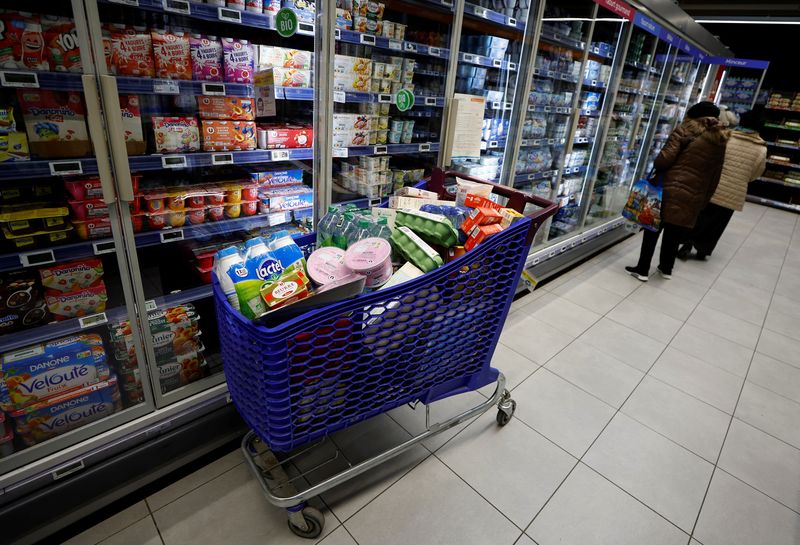(Reuters) -The moment investors have been waiting for seems to finally have arrived, as major central banks have indicated they are nearing the end of their string of interest-rate rises.
The week ahead brings more evidence of how much progress is left for developed-economy policymakers, while in the emerging world, India is set to enter the bond-market big time and a raft of central banks wrestle with a dilemma.
Here's your week ahead in markets from Vidya Ranganathan in Singapore, Lewis Krauskopf in New York and Naomi Rovnick, Karin Strohecker and Amanda Cooper in London.
1PRICE POINTS
The Federal Reserve's preferred inflation gauge lands on Sept. 29, right after the central bank signalled it plans to keep interest rates higher for longer to tame price pressures.
The personal consumption expenditures (PCE) price index rose 3.3% in the 12 months through July. The Fed tracks the PCE price indexes for its 2% inflation target.
In its latest decision on Wednesday, the Fed kept interest rates steady, but projected monetary policy will remain significantly tighter through 2024 than previously expected.
Investors will also be watching events in Washington, where U.S. lawmakers are haggling over a spending bill with a Sept. 30 deadline to avert a potential government shutdown that could rattle markets.
2PAUSE AND EFFECT
The European Central Bank has not called time on its battle against inflation, but markets are laser-focused on when it might. That means euro zone consumer prices data on Sept. 29 has the potential to move markets significantly.
Headline inflation in the euro area remains far above the ECB's 2% target but has been moving in the right direction.
Consumer prices increased by 5.2% year on year in August, extending a downward trend that started last autumn.
The ECB raised its deposit rate to a record 4% this month and revised up its inflation forecast for next year.
But with the currency bloc's economy weakening, the central bank also hinted a pause, at least, was coming. A further decline in inflation will undoubtedly spur intense speculation about the timing of its first rate cut.
3NO BARREL OF LAUGHS
After what has felt like a relentless period of cost-of-living crisis and rising interest rates, central banks are finally wrestling inflation into submission. Or so they thought.
The oil price - a major inflation variable that lies beyond the control of any policymaker - has risen above $90 a barrel to 10-month highs, serving an unpleasant reminder that what goes down can also easily go up again. The key driver has been Saudi Arabia and Russia, which account for over 20% of global output, agreeing to extend production cuts through year-end, to align supply with demand.
Most analysts agree the oil price would, in theory, have to remain higher for longer to really push up headline inflation. But the predictions of $100 oil are becoming louder. Central banks may not yet be able to declare the war on inflation over.
4WELCOME TO THE CLUB
India finally got the nod from JPMorgan to join its benchmark GBI-EM emerging market domestic bond index, which is followed by $236 billion of funds. The decision will draw billions of dollars into domestic fixed-income markets of the world's fifth largest economy, with official inclusion due in increments from July 2024 until India reaches the 10% mark.
India began talks on including its debt in global indexes in 2019, but that ambition had been delayed by a number of factors, including its stance on capital gains taxes and local settlement.
Its government bond markets - in which foreigners currently hold less than 2% of outstanding paper - could get another boost when fellow index provider FTSE Russell decides on Sept. 28 whether to add India to its emerging bonds benchmark.
5ASIA'S CURRENCY CONUNDRUM
Asian central banks have a dilemma: how to handle weakening economic growth and peaking inflation, while arresting the slide in currencies to maintain stability in their financial systems.
The Bank of Indonesia kept rates steady for an eighth month on Thursday. Benign inflation might have argued for a cut, but Governor Perry Warjiyo emphasised currency stability was a deciding factor. The rupiah is at six-month lows and its yield premium over U.S. dollars has shrunk.
The same day, the Philippine central bank prioritised support for the peso over economic growth running at its slowest in nearly 12 years in the second quarter, with a hawkish pause.

The Bank of Thailand meets on Sept. 27 and is likely to stay hawkish, forced by the beleaguered baht, despite wide twin deficits and a struggling economy.
Heavy currency-market intervention has been one tactic. But much may rest on decisions of other central banks further afield, namely the Federal Reserve.